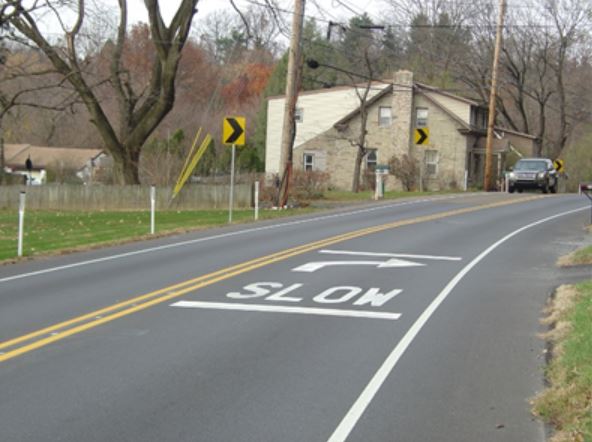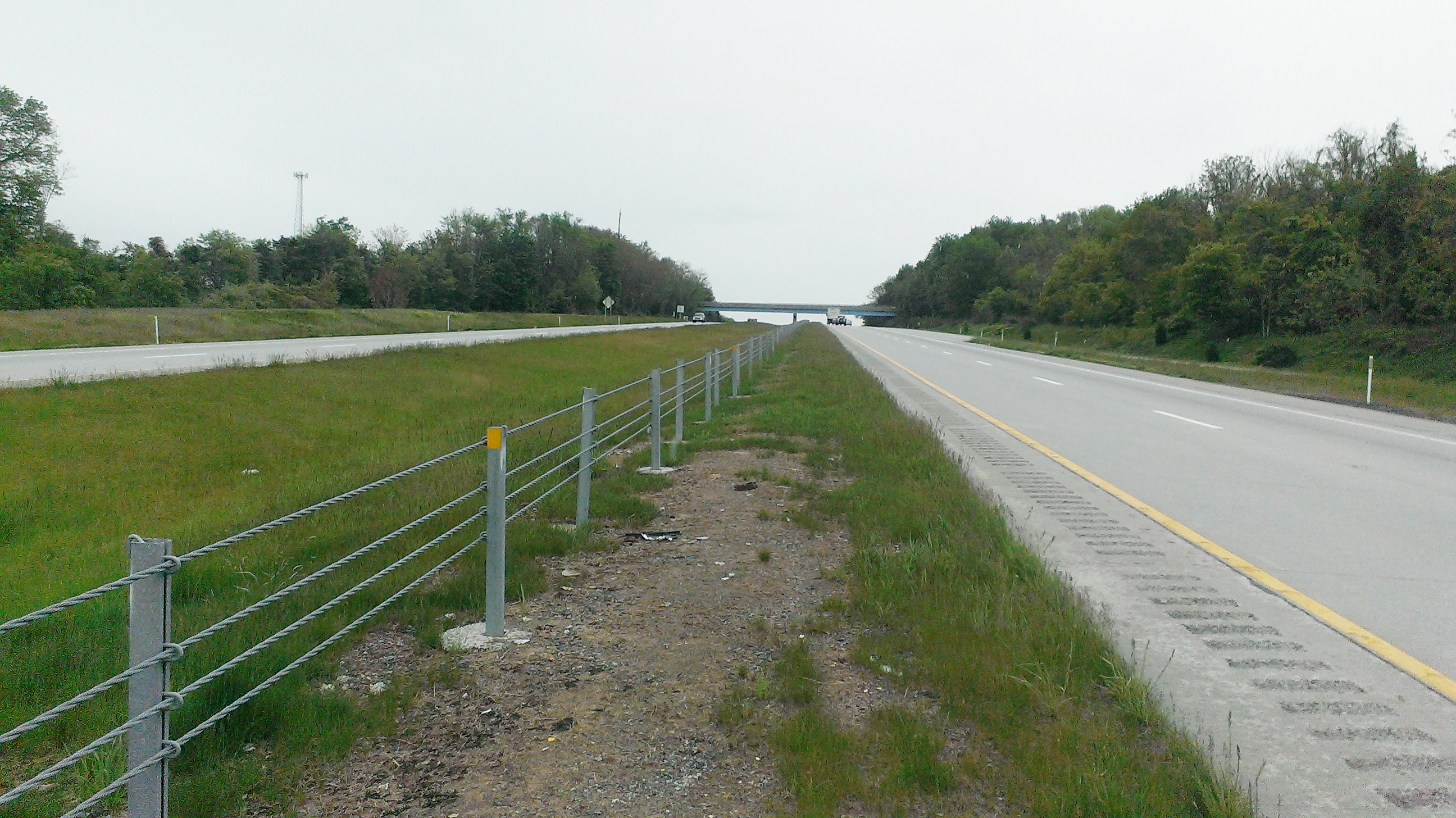Safety Infrastructure Improvement Programs
Along with enforcement and education, another key component of traffic safety is engineering. PennDOT performs numerous engineering improvements to enhance your safety along the highways.
Low-Cost Safety Improvement Program
Each year, PennDOT invests approximately $10 million in state funding to implement low-cost safety improvements throughout the state. Examples of these projects include:
Centerline, Edgeline and Shoulder Rumble Strips
Rumble strips are raised or grooved patterns that differ in texture from the road surface and produce a rumbling sound and cause the vehicle to vibrate when a vehicle's tires pass over them. The noise and vibration produced by rumble strips are effective alarms for drivers who are leaving their lane of the roadway. The number of fatalities in head-on / opposite direction sideswipe crashes has declined by 47 percent in Pennsylvania since 2002 thanks to the installation of more than 6,800 miles of centerline rumble strips as of September 2022.

Warning of Curve Ahead
PennDOT enhances advanced curve warning through the use of pavement markings applied directly to the roadway, as well as signs indicating curve ahead. Research in 2019 by Penn State University shows the in-lane curve warning pavement markings reduce rural crashes between 23% to 35%.

Cable Median Barrier
Cable median barriers are life-saving traffic devices for use in existing medians to prevent cross-over crashes. They are one of the most-effective safety measures deployed to protect motorists on highways. As of December 2022, there were over 503 miles of cable median barrier installed in 39 counties throughout the state.

Highway Safety Improvement Program
Each year, PennDOT receives approximately $126 million in federal funding for its Highway Safety Improvement Program (HSIP). The department distributes $74 million of this funding to its planning regions based on fatalities, major injuries and reportable crashes. Each planning organization receives $500,000 to allow for larger projects in the smaller planning organizations. The remaining $40 million is awarded annually to implement low- to moderate-cost systemic infrastructure safety improvements.
The overall purpose of this program is to achieve a significant reduction in traffic fatalities and serious injuries on state roads through the implementation of systemic projects that deploy multiple safety countermeasures over several locations and medium-cost infrastructure-related highway safety improvements.
High Friction Surface Treatment
Maintaining the appropriate amount of pavement friction is critical for safe driving. To enhance safety at locations known to have a history of wet-pavement-related crashes and lane departures, Pennsylvania has used pavement treatments that increase friction. These high friction surface treatments, or HFST, are pavement-surfacing systems with exceptional skid-resistant properties not typically provided by conventional materials. HFST are applied in spot locations to provide a durable, long-lasting pavement surface that helps to improve pavement friction in both wet and dry conditions. It is especially effective at locations where wet-pavement crashes are common.
Through November 2021, PennDOT has installed high friction surface treatment at 529 locations in Pennsylvania in an effort to prevent crashes and save lives. Moving forward, PennDOT continues to evaluate this surface treatment and has identified additional locations throughout the state that would benefit from this innovative technique.